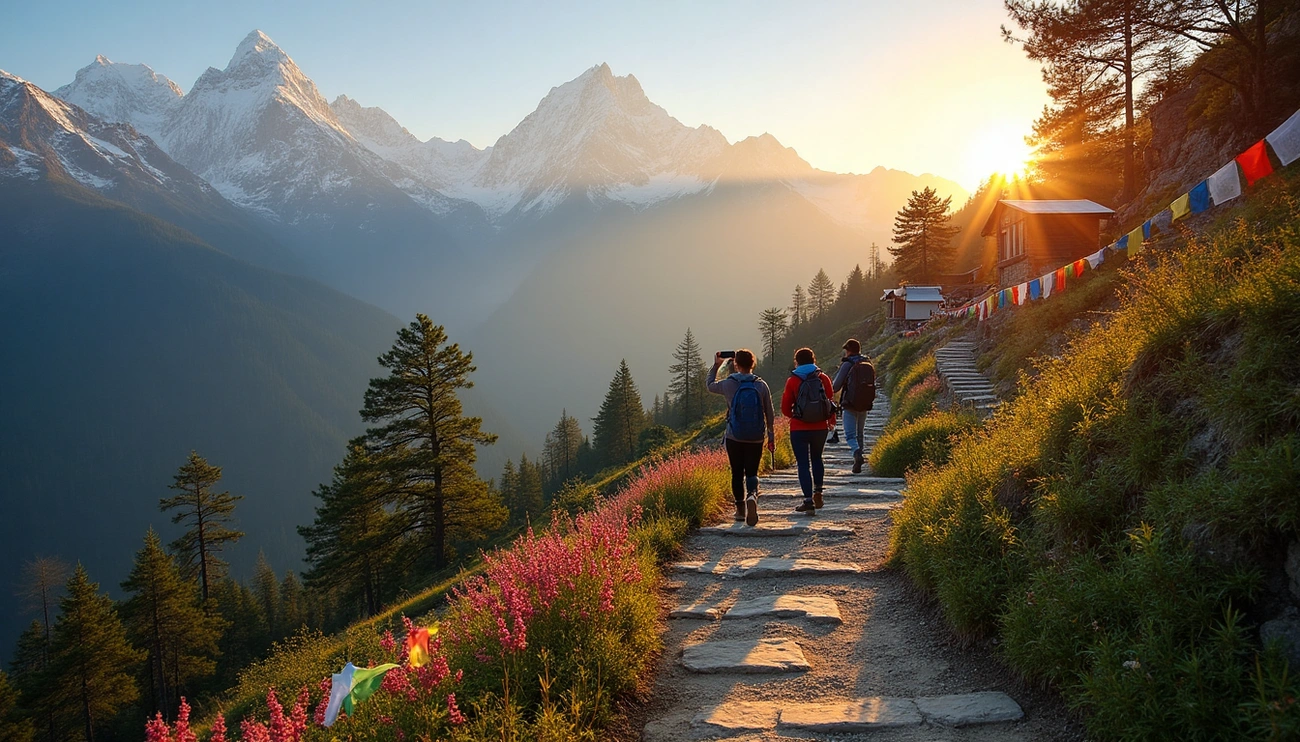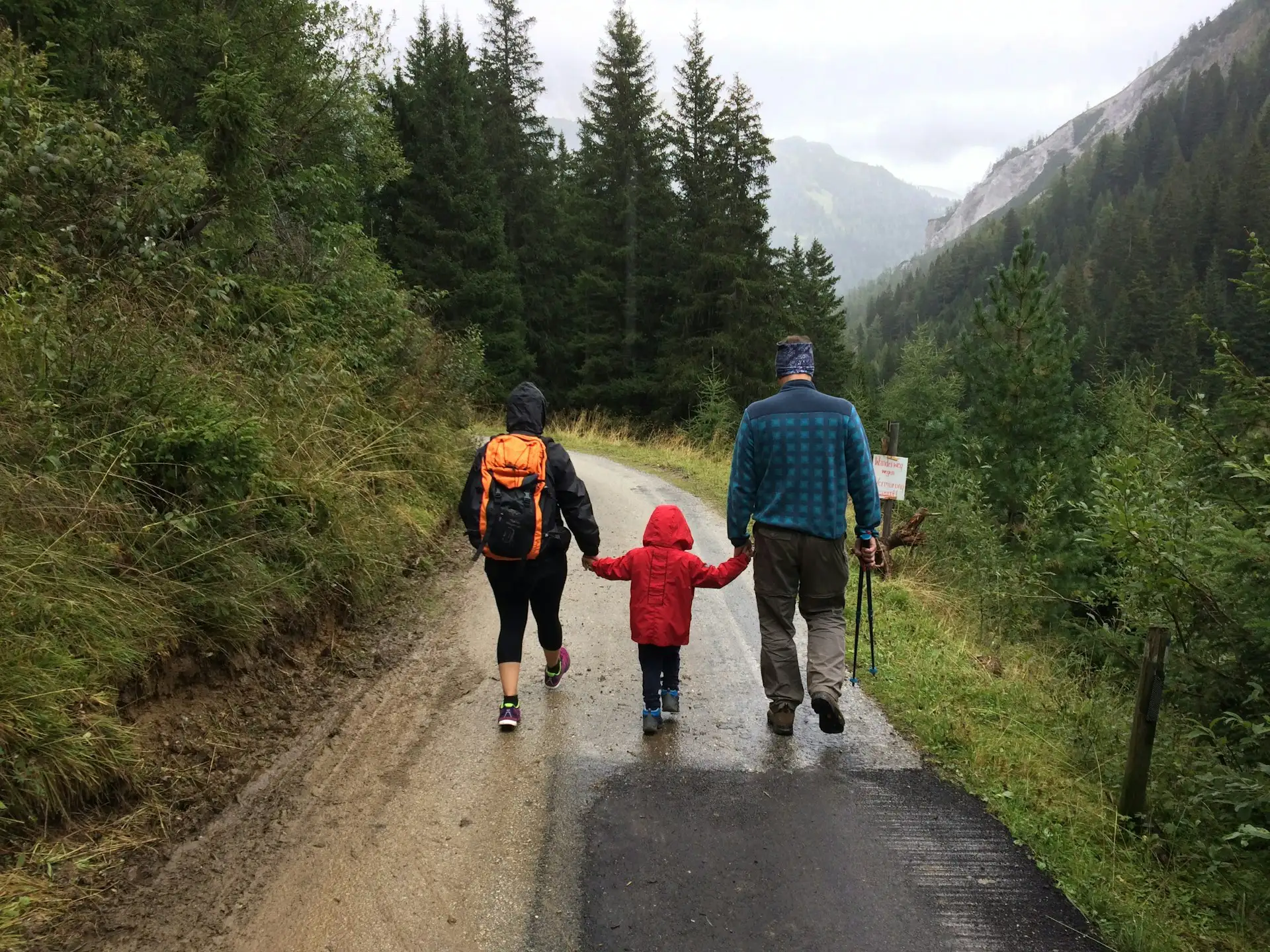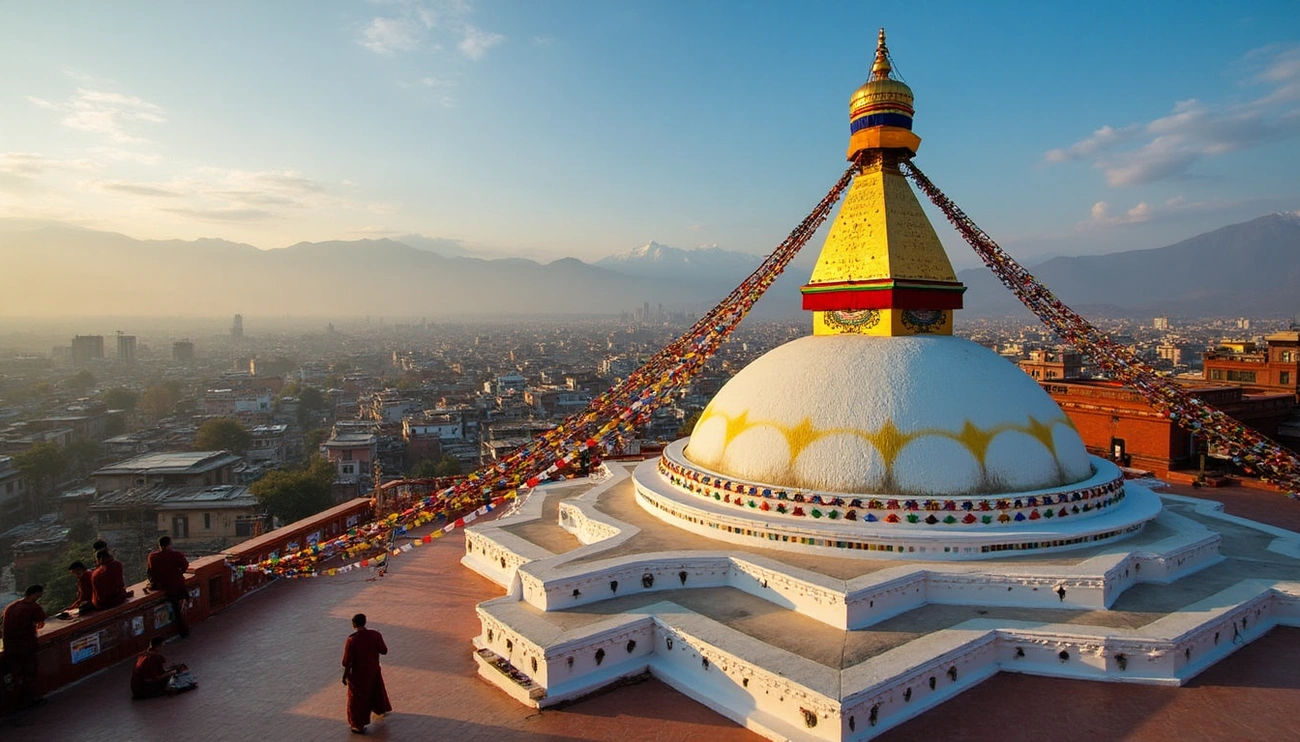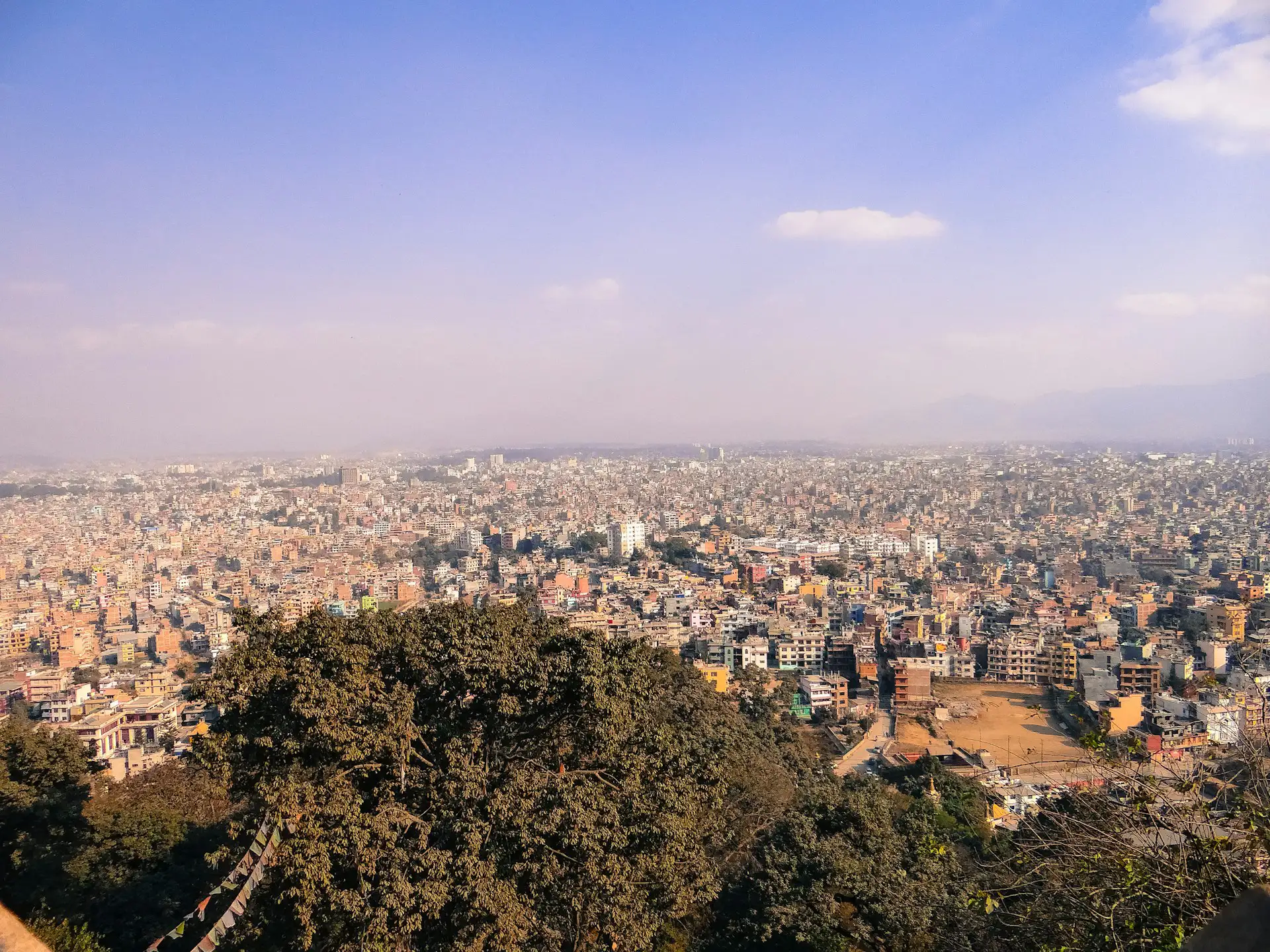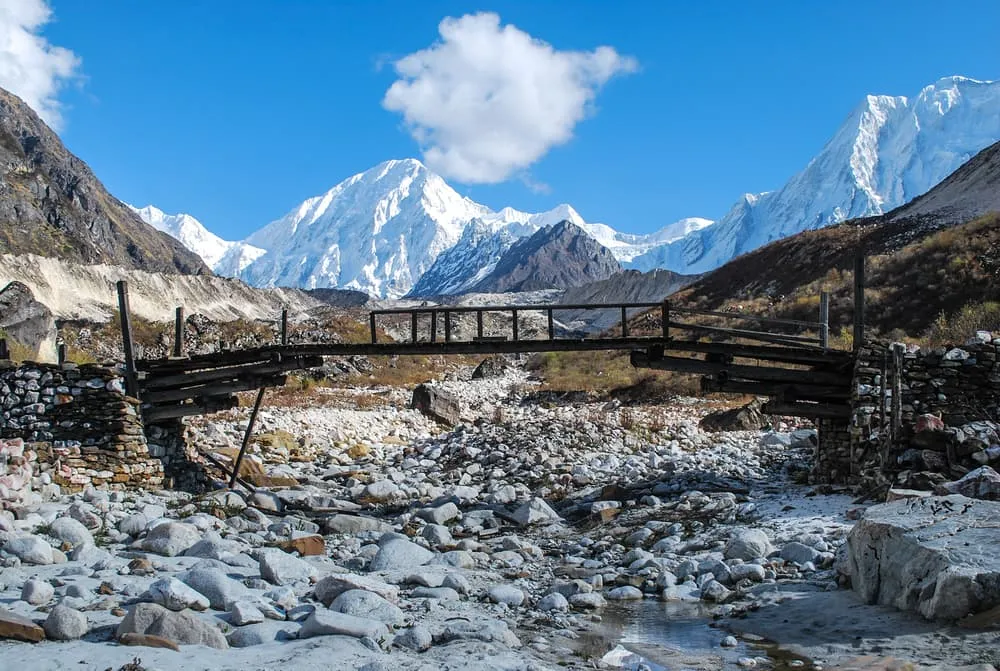An easy trek in Nepal surprisingly costs as little as $310 per person when traveling with a group. While Nepal is home to the world’s highest peaks, not all treks require extreme experience or expensive budgets.
Easy treks in Nepal typically involve walking just 4-5 hours daily at altitudes between 1,500 to 3,500 meters, making them perfect for beginners. The best trek in Nepal for beginners often combines affordability with stunning views, as seen in options like the Ghorepani Poon Hill Trek starting at $320 or the Mardi Himal Trek at $310. Additionally, short and easy treks in Nepal such as the Dhampus Trek (3 nights/4 days) and the Langtang Valley Trek (7 days) offer incredible Himalayan experiences without breaking the bank. In fact, trekking Nepal can be both accessible and budget-friendly for first-time adventurers looking to experience the majesty of the Himalayas.
Ghorepani Poon Hill Trek: A Short and Scenic Budget Trek
The Ghorepani Poon Hill Trek stands out as Nepal’s perfect introduction to Himalayan adventures, offering breathtaking mountain views without requiring extensive hiking experience. This trek takes trekkers through rhododendron forests and traditional villages before culminating at the famous Poon Hill viewpoint with its panoramic vista of the Annapurna and Dhaulagiri ranges.
Duration and difficulty level
The Ghorepani Poon Hill Trek typically spans between 4 to 7 days, depending on your chosen itinerary and pace. For those with time constraints, a shorter 4-day route involves longer daily hiking (approximately 6-7 hours per day), whereas the more leisurely 6-7 day itinerary allows for better acclimatization and cultural immersion. Throughout the journey, trekkers cover approximately 40-50 kilometers of trail distance.
Despite being relatively short, this trek is classified as easy to moderate in difficulty. The terrain involves gradual ascents with some challenging sections, particularly the 3,300-stone staircase leading to Ulleri village that many trekkers find demanding. Most days involve walking for about 5-6 hours, with the daily hiking hours ranging from 4 to 7 hours.
Altitude-wise, the highest point reached is Poon Hill at 3,210 meters (10,532 feet), which significantly reduces the risk of altitude sickness compared to other Himalayan treks. Nevertheless, the trek’s moderate elevation still delivers the authentic trekking experience without venturing into dangerous altitude zones. Furthermore, overnight stays generally remain below 3,000 meters, creating a safer environment for beginners and those sensitive to altitude changes.
Cost breakdown and permit fees
The total cost for the Ghorepani Poon Hill Trek typically ranges between $300-$600 per person, depending on trek duration, season, and service level chosen. Many trekking agencies offer organized packages starting from around $350, with comprehensive options around $490-$558 that include all essentials.
For budget-conscious travelers, here’s a breakdown of costs:
Permits Required:
- Annapurna Conservation Area Permit (ACAP): NPR 3,000 ($30) for foreign nationals
- Trekkers’ Information Management System (TIMS) Card: NPR 2,000 ($20) for individual trekkers
- Poon Hill Entrance Fee: NPR 100 ($1)
Accommodation:
- Teahouses along the trail: $5-10 per night for basic rooms
- Higher-end lodges with attached bathrooms (in Ghorepani/Ghandruk): $10-18 per night
- Kathmandu/Pokhara pre/post-trek: $10-50 depending on hotel standard
Food and Meals:
- Trail meals: $5-12 per meal, with costs increasing with altitude
- Daily food budget: Approximately $10-25 per day
- Basic dishes like dal bhat (rice and lentils): Around $5
Transportation:
- Kathmandu to Pokhara: $10-15 by tourist bus or $100-150 by flight
- Pokhara to Nayapul (trek starting point): $15-25 for shared jeep
- Optional jeep ride to Ulleri: $15 shared or $100 private
Additional Costs:
- Guide services: $25-30 per day
- Porter services: $20-25 per day[53]
- Equipment rental: $5-10 per item per day if needed
- Tips for guides/porters: $5-10 per day recommended
For a 4-day trek, budget travelers can complete the entire experience for approximately $95 total ($23-25 per day) if trekking independently and staying in basic accommodations.
Best time to go
The ideal times for the Ghorepani Poon Hill Trek are during spring (March to May) and autumn (September to November). Both seasons offer stable weather conditions with clear skies and comfortable temperatures, making them perfect for trekking and photography.
Spring (March-May): Spring brings daytime temperatures ranging from 10°C to 25°C, with nighttime temperatures around 0°C to 5°C. This season is particularly special because of the rhododendron forests that burst into bloom, especially from mid-March to late April, creating a spectacular display of colors against the mountain backdrop. April stands out as the peak month for rhododendron blooms and offers excellent visibility of the mountain ranges.
Autumn (September-November): Autumn features daytime temperatures between 7°C to 20°C and is characterized by exceptionally clear skies after the monsoon season. October and November provide the most stable weather conditions with crystal-clear mountain views, making this the preferred season for photographers and those seeking unobstructed panoramas. This period also coincides with Nepali festivals like Dashain and Tihar, adding cultural experiences to your trek.
Off-seasons: Winter (December-February) brings colder conditions with temperatures dropping to 2°C to 15°C during the day and below freezing at night. However, the trails experience fewer trekkers, providing a more peaceful experience with still-impressive mountain views.
The monsoon season (June-September) is generally less recommended due to rain, slippery trails, and limited visibility, though prices may be lower.
Why it’s ideal for beginners
The Ghorepani Poon Hill Trek has earned its reputation as one of the best treks in Nepal for beginners for several compelling reasons:
Accessible terrain and moderate difficulty: Unlike more challenging Himalayan treks, the Poon Hill route offers a gentler introduction to mountain trekking. The well-maintained trails don’t require technical climbing skills or previous high-altitude experience. Despite some challenging sections, the overall trek remains manageable for people with average fitness levels.
Comfortable accommodation network: The entire route is dotted with teahouses and lodges, ensuring trekkers never need to camp or carry heavy equipment. These accommodations provide basic but comfortable facilities, with options ranging from simple rooms to more upgraded lodgings with attached bathrooms in villages like Ghorepani and Ghandruk.
Lower altitude and reduced health risks: With the maximum elevation of 3,210 meters at Poon Hill, this trek significantly minimizes the risk of altitude sickness compared to higher routes like Everest Base Camp. Most overnight stays remain below 3,000 meters, creating a safer environment for first-time trekkers.
Spectacular rewards for modest effort: Despite being shorter and less challenging than other Himalayan treks, the Poon Hill trek delivers extraordinary panoramic views of the Annapurna and Dhaulagiri mountain ranges. The sunrise view from Poon Hill, illuminating snow-capped peaks including Annapurna I (8,091m) and Dhaulagiri (8,167m), ranks among Nepal’s most impressive mountain vistas.
Cultural immersion opportunities: The trek passes through traditional Gurung and Magar villages, offering glimpses into authentic mountain life and local cultures. Particularly in Ghorepani and Ghandruk, trekkers can experience local hospitality and learn about indigenous communities.
Flexible duration options: With itineraries ranging from 4 to 7 days, this trek can be tailored to fit different schedules and fitness levels. This flexibility makes it ideal for travelers testing their trekking abilities before committing to longer, more challenging routes.
Proximity to Pokhara: The trek’s starting point is easily accessible from Pokhara, Nepal’s adventure hub, making logistics simpler than for remote treks. This convenience reduces travel fatigue before beginning the actual hiking portion.
For those new to trekking or visiting Nepal for the first time, the Ghorepani Poon Hill Trek provides the perfect balance between challenge and comfort, authentic experience and accessibility, making it an ideal gateway to the magnificent world of Himalayan trekking.
Mardi Himal Trek: A Hidden Gem for Budget Travelers
Nestled in the Annapurna region, the Mardi Himal Trek has rapidly emerged as one of Nepal’s best-kept secrets for budget-conscious adventurers. This relatively new trekking route offers a perfect balance of stunning mountain views, cultural experiences, and affordability that makes it increasingly popular among first-time trekkers seeking authentic Himalayan experiences without breaking the bank.
Trail overview and highlights
The Mardi Himal Trek leads trekkers through diverse landscapes to the base of the spectacular Mardi Himal (5,587m) and provides close-up views of the iconic Machapuchare (Fishtail) mountain. This short and accessible trek typically takes 5-7 days to complete, covering approximately 40-50 kilometers with daily walking times of 5-6 hours. For travelers with limited time, the trek can be condensed into a 4-day itinerary, although this creates a more intensive experience.
What makes this trek particularly appealing is its accessibility for beginners. The Mardi Himal route is classified as easy to moderate in difficulty, requiring minimal technical skills. The trail begins with lush green forests at lower elevations and gradually transitions to more exposed, rocky terrain at higher altitudes. Most sections offer comfortable walking conditions, with only the final stretch from High Camp to Mardi Himal Base Camp presenting steeper, more challenging terrain.
The trek’s highest point at Mardi Himal Base Camp reaches 4,500 meters (14,763 feet), providing spectacular panoramic views that rival those of more famous and expensive treks. Trekkers witness breathtaking vistas of several prominent Himalayan peaks including:
- Annapurna South
- Hiunchuli
- Machapuchare (Fishtail)
- Mardi Himal itself
One primary advantage of this trek is its relatively uncrowded nature compared to popular routes like Annapurna Base Camp or Everest Base Camp. This “off-the-beaten-path” quality creates a more peaceful experience, allowing trekkers to enjoy nature’s serenity without tourist crowds. As one trekker aptly described it, the Mardi Himal route gives you a glimpse of “what the Annapurna Circuit was like 30 years ago”.
The trek route weaves through charming ethnic settlements and verdant rhododendron forests that burst into magnificent red and white blooms during spring. From Low Camp, considered a major highlight of the trek, trekkers can enjoy exceptional views of Machhapuchhare along with stunning sunrise and sunset panoramas.
Accommodation and food options
Accommodation along the Mardi Himal Trek primarily consists of teahouses and lodges, providing basic but comfortable facilities for trekkers. These locally-run establishments offer simple rooms typically with twin beds, pillows, and warm blankets.
The cost of accommodation varies by altitude and season:
- Lower elevations (Kande to Forest Camp): USD 5-8 per night
- Higher elevations (High Camp to Base Camp): USD 8-15 per night
Most rooms feature shared bathroom facilities, although some lodges at lower elevations offer attached bathrooms for an additional fee. For budget travelers, some teahouses also provide dormitory-style options that further reduce costs. During peak seasons, advance booking is recommended as accommodations can fill quickly.
Additional services at teahouses come with supplementary charges:
- Hot showers: USD 1-2 per shower
- Wi-Fi access: Available at lower elevations but becomes limited as you ascend
- Device charging: Small fee of USD 1-3 depending on location
Food options along the trek are surprisingly varied despite the remote location. The menu resembles other Annapurna region treks, with meals becoming simpler and slightly more expensive at higher elevations. The standard daily food cost ranges between USD 20-30, though budget-conscious trekkers can reduce this considerably.
Popular food items include:
- Dal Bhat (traditional Nepali rice and lentil dish): USD 3-8, often with unlimited refills
- Western options (pasta, pizza, burgers): USD 4-9
- Breakfast items (porridge, Tibetan bread, eggs): USD 3-6
- Momos (dumplings): USD 4-7
One money-saving strategy involves eating at the same teahouse where you’re staying, as many establishments offer accommodation discounts or even free rooms for guests who purchase their meals on-site.
For drinks, bottled water costs USD 1-3 per liter, with prices increasing with altitude. Most teahouses offer tea, coffee, and some alcoholic beverages, though drinking alcohol at high altitudes is generally not recommended.
Tips for saving money on this trek
The Mardi Himal Trek is already one of Nepal’s most affordable trekking options, with all-inclusive packages starting from around USD 400-700. Independent trekkers can reduce costs even further with these strategic approaches:
Travel during off-season periods. The peak seasons for Mardi Himal (March-May and September-November) offer the best weather but also come with higher prices. Visiting during December-February or June-August can yield significant discounts on accommodation and services. Consider that weather conditions are less predictable during these periods, so pack accordingly.
Trek in a group to share expenses. Traveling with companions allows you to split costs for transportation, guides, and porters. Group treks typically result in lower per-person rates as fixed expenses are distributed among participants.
Optimize your water strategy. Rather than purchasing bottled water throughout the trek, bring water purification tablets or a filter bottle. This simple adjustment can save USD 5-10 daily while also reducing plastic waste. Many teahouses also offer boiled water at a lower cost than bottled options.
Stay and eat at the same teahouse. Many lodge owners offer substantial discounts on accommodation—sometimes even providing free rooms—if you commit to having your meals at their establishment. This arrangement benefits both parties and can significantly reduce overall costs.
Pack strategically to avoid porter costs. Carrying your own backpack eliminates the need for porters (who typically charge USD 20-25 per day). Pack only essentials, focusing on lightweight, multi-purpose items. For gear you’ll only use briefly, consider renting in Kathmandu or Pokhara (USD 1-10 per item daily) rather than purchasing.
Bring your own snacks from Pokhara. Chocolate bars, energy snacks, and dried fruits cost substantially more on the trek than in Pokhara. Stocking up before departure can save valuable rupees, especially at higher elevations where prices increase dramatically.
Use local transportation. While private jeeps offer convenience, public busses to trailheads are considerably cheaper. From Pokhara, shared jeeps provide a good balance between cost and comfort for reaching the trek starting point.
Consider a shorter itinerary. The standard 5-day itinerary offers the best experience-to-cost ratio. While possible to complete in 3-4 days, this creates a more physically demanding journey described by some as “brutal”.
Carry a power bank. Teahouses charge for device charging (approximately USD 1-3 per charge). A good power bank can eliminate these expenses throughout your trek.
The Mardi Himal Trek represents exceptional value for money-conscious travelers. With proper planning and these cost-saving strategies, a full 5-day trek can be completed for approximately USD 150-205 per person when sharing accommodations and transportation, making it truly one of Nepal’s most affordable Himalayan adventures.
Langtang Valley Trek: Affordable Himalayan Experience Near Kathmandu
Just a few hours’ drive from Kathmandu, the Langtang Valley Trek offers one of Nepal’s most accessible and affordable Himalayan experiences. This journey takes trekkers through the magnificent Langtang National Park, providing close encounters with breathtaking landscapes without the hefty price tag of more famous routes. Typically completed in 7-10 days, this easy trek in Nepal presents the perfect balance of stunning natural beauty, rich cultural heritage, and budget-friendly accessibility.
Cultural and natural highlights
The Langtang region serves as a living museum of Tamang culture, with villages offering authentic glimpses into traditional mountain life. The valley is predominantly inhabited by Tamang people, whose heritage is deeply rooted in Tibetan customs. Their name originates from the words “Ta” and “Mang,” meaning “horse” and “traders,” reflecting their historical role in trans-Himalayan commerce.
Throughout the trek, visitors encounter numerous Buddhist monuments including ancient monasteries, prayer wheels, and mani walls that add spiritual depth to the journey. The 700-year-old Kyanjin Gompa stands as a cultural centerpiece, showcasing elaborate architecture and sacred Buddhist paintings. According to local beliefs, the revered Buddhist figure Padmasambhava meditated in the valley centuries ago, establishing the area’s deep spiritual significance.
Langtang’s cultural calendar features unique celebrations that fortunate trekkers might experience. The Tarna festival, celebrated during Bhadra Purnima (August-September), commemorates Guru Rinpoche’s meditation in a cave in Upper Langtang. Likewise, the Losar festival marks the Lunar New Year with 15 days of celebrations by the local Tamang and Hyolmo communities.
On the natural front, Langtang National Park dazzles with its extraordinary biodiversity. The park encompasses four distinct vegetation zones—temperate deciduous, subalpine forests, alpine forests, and tundra—creating diverse habitats for countless plant and animal species. Lucky trekkers might spot endangered wildlife including red pandas, Himalayan tahrs, and musk deer. Birdwatchers will appreciate potential sightings of Himalayan Monals, Satyr Tragopans, Golden Eagles, and Lammergeiers along the trail.
The trek rewards hikers with spectacular views of numerous peaks including Langtang Lirung, Dorje Lakpa, and Ganesh Himal. Moreover, crystal-clear glacial rivers, white water rapids, waterfalls, and the sacred Gosainkunda Lake enhance the natural splendor of this region.
Cost-saving tips for solo or group trekkers
Trekking Langtang Valley offers excellent value, with typical costs ranging between $500-$700 for a 7-day journey. However, strategic planning can reduce expenses substantially.
Accommodation costs remain remarkably affordable throughout the route. Basic teahouses charge approximately $5-10 per night, with many owners offering free accommodation when you commit to eating all meals at their establishment—a potential savings of $30-40 over the standard trek. For maximum savings, aim to arrive at teahouses before 3 PM during peak season to secure rooms before they fill up.
Food represents one of the largest expenses, with meals costing $5-12 each and prices rising with altitude. Budget approximately $20-30 daily for meals. To economize:
- Choose traditional Nepali dishes like dal bhat (rice and lentils), which often include unlimited refills, providing better value than Western options
- Purchase energy bars, nuts, and chocolate in Kathmandu, where prices are 50-70% cheaper than along the trail
- Carry a reusable water bottle with a built-in filter or water purification tablets to avoid spending $40-60 on bottled water during your trek
For group trekkers, sharing costs creates significant savings. Even informal groups who meet on the trail can negotiate 15-20% discounts when visiting teahouses together. Guide and porter costs—typically $25-35 daily for guides and $20-25 daily for porters—can be divided among group members.
Seasonal timing also affects your budget. Peak seasons (October-November and March-May) bring higher prices and less negotiating power. Meanwhile, shoulder seasons (early March, late May, early September, late November) offer the best balance of pleasant weather and reasonable prices.
How to get there on a budget
Reaching Langtang Valley begins with transportation from Kathmandu to Syabrubesi, the trek’s starting point located approximately 122 km (7-8 hours) from the capital. Budget-conscious travelers have several options:
Public bus: The most economical choice costs approximately $10 per person one-way. Busses depart from Kathmandu’s Machapokhari Bus Station between 6-9 AM daily. While this option takes longer (8-9 hours) and offers basic comfort, it represents significant savings over private transportation. For the best experience, leave early (around 7 AM) to arrive before dark.
Shared jeep: A middle-ground option costing around $15-20 per person. Jeeps depart from Machapokhari every half hour in the morning, typically starting at 7 AM. These vehicles accommodate 8-10 passengers and complete the journey in approximately 5-6 hours. During peak season, advance booking is recommended to secure seats.
Private jeep: The most comfortable but expensive option at $120-150 one way. These vehicles fit 5-7 passengers, making them cost-effective when traveling with a group that can split the expense. Private transportation offers maximum flexibility, allowing stops at scenic viewpoints and direct pickup from your hotel.
Once in Syabrubesi, the trek requires two permits: a Langtang National Park Entry Permit costing $30 for foreign nationals, and a TIMS (Trekkers’ Information Management System) card at $10 when trekking with an agency or $20 for solo trekkers. These permits can be obtained in Kathmandu before departure.
After completing your trek, the same transportation options are available for the return journey to Kathmandu.
Throughout the trek, remember that ATMs don’t exist on the trail, so carry at least $150-200 extra in cash for emergencies or unexpected expenses. Additionally, travel insurance with high-altitude trekking coverage is essential, typically costing $50-100 for a comprehensive two-week policy.
For travelers seeking an accessible, culturally rich, and budget-friendly trekking experience in Nepal, the Langtang Valley Trek stands as one of the finest options, delivering extraordinary Himalayan beauty without the premium price tag of more famous routes.
Dhampus Trek: The Easiest Trek with Great Views
For travelers seeking the gentlest introduction to Himalayan trekking, the Dhampus Trek stands as the ultimate choice among easy treks in Nepal. Often called Nepal’s most family-friendly trek, this short adventure delivers spectacular mountain panoramas with minimal physical demands, proving that remarkable Himalayan experiences needn’t require exceptional fitness or extensive time commitments.
Perfect for families and first-time trekkers
The Dhampus Trek earns its reputation as an ideal starter trek through its exceptional accessibility. Undoubtedly one of the few treks in Nepal suitable for all age groups, it welcomes everyone from young children to elderly travelers without requiring advanced trekking skills. The trail features gradual ascents with well-marked paths, making navigation straightforward even for first-time hikers.
What sets this trek apart is its adaptability to different comfort levels. The path involves some uphill climbing but remains manageable for anyone leading an active lifestyle. First-time trekkers appreciate that the route stays at lower elevations (below 2,100 meters), essentially eliminating altitude sickness concerns that plague more challenging Himalayan journeys.
Besides physical accessibility, the cultural dimension adds significant value. The trek leads through traditional Gurung villages, offering glimpses into authentic mountain life. Visitors can interact with local communities, sample traditional cuisine, and experience the warm hospitality for which Nepal’s mountain peoples are renowned.
Short itinerary and low elevation
The Dhampus Trek’s concise timeline makes it perfect for travelers with limited schedules. Typically completed in just 2-3 days, it offers maximum scenic rewards for minimal time investment. The standard route follows either of two main starting points:
- Phedi Route: A shorter 2.9-kilometer trail taking approximately 2-2.5 hours of uphill walking to reach Dhampus village (1,650 meters)
- Kande Route: Slightly longer but includes the bonus of visiting Australian Camp (2,050 meters) before descending to Dhampus
Day 1 typically involves driving from Pokhara to your chosen trailhead (Phedi or Kande), then trekking to Dhampus or Australian Camp. The walking duration rarely exceeds 4 hours per day, making it manageable even for those unaccustomed to hiking. Day 2 can include exploring the village or continuing to other points before returning to Pokhara, usually via Phedi, which is just an hour’s drive from Pokhara.
The trek’s highest point at Australian Camp (2,050 meters) remains well below altitudes where oxygen levels significantly decrease. This low elevation profile primarily contributes to the trek’s suitability for all fitness levels while still offering breathtaking views of Annapurna South, Fishtail, Dhaulagiri, and Lamjung Himal.
Budget-friendly lodging options
Accommodations in Dhampus cater to budget-conscious travelers while providing comfortable bases for mountain viewing. Teahouses and small lodges form the backbone of the area’s hospitality infrastructure, with several standout options:
Mountain Lodges of Nepal – Dhampus offers higher-end comfort with excellent service, rated 4.7/5 by travelers. For more budget-conscious trekkers, Hotel Paradise View and Dhampus Village Eco Lodge provide quality stays at lower price points.
Pricing remains remarkably affordable throughout the area:
- Basic teahouse rooms: $5-10 per night
- Lodges with attached bathrooms: $10-18 per night
- Shared rooms with basic amenities: Most economical option for solo travelers
Many establishments operate on a traditional teahouse model where meals are served in a communal dining area. The menu typically features both Nepali cuisine (notably dal bhat) and Western options like pancakes, pizza, and burgers. Consequently, many lodge owners offer free or heavily discounted accommodation when guests purchase their meals on-site, creating excellent value for budget trekkers.
This combination of spectacular mountain views, cultural immersion, and affordability makes the Dhampus Trek the perfect starting point for anyone new to trekking Nepal.
Kathmandu Valley Trek: A Cultural Walk Close to the City
The Kathmandu Valley Trek offers cultural immersion literally on the doorstep of Nepal’s capital city, making it perfect for travelers with limited time yet eager for authentic Himalayan experiences. This accessible circuit requires minimal planning yet delivers maximum cultural insights coupled with impressive mountain views.
Trek route and key stops
The trail typically begins at Sundarijal, just 30 minutes from central Kathmandu, and follows ancient pathways connecting traditional villages around the valley rim. Popular routes include:
- Sundarijal to Chisapani (day 1), continuing to Nagarkot (day 2), then to Dhulikhel or Bhaktapur (day 3)
- Dhulikhel to Namobuddha to Panauti circuit (2-3 days)
Panauti stands out as a historical gem, having served as the capital of the autonomous kingdom of Banepa in the 13th century. This ancient town showcases traditional Newar architecture with pink brick and carved wood. Namobuddha, another significant stop, features a stupa commemorating Buddha’s legendary act of offering his body to a hungry tigress.
No need for expensive gear or permits
First and foremost, unlike most Himalayan treks, many Kathmandu Valley routes don’t require TIMS cards. For sections crossing Shivapuri National Park, an entrance permit costs just NPR 1,000 ($10) for foreign tourists and NPR 600 for SAARC country visitors.
Regarding equipment, trekkers needn’t invest in specialized high-altitude gear. Basic hiking clothes suffice, plus lightweight essentials available for rent in Thamel if needed. Since the trek stays at lower elevations, cold-weather equipment remains unnecessary except during winter months.
Ideal for short stays and low budgets
The entire trek costs between $130-200, making it substantially cheaper than remote Himalayan routes. Teahouses along the way offer accommodations from $5-10 per night, often providing free rooms when meals are purchased on-site.
Duration flexibility represents another major advantage, with routes easily customizable from single-day hikes to 3-5 day circuits. Even with just one or two days available, travelers can experience authentic village life, verdant forests, and distant Himalayan panoramas including views of Annapurna, Langtang, and occasionally Everest on clear days.
Conclusion
Affordable Himalayan adventures await travelers of all experience levels throughout Nepal. These five budget-friendly treks demonstrate how magnificent mountain experiences remain accessible without extensive trekking backgrounds or extravagant budgets. Each route offers unique rewards while maintaining reasonable costs between $130-700 depending on duration and services chosen.
First-time trekkers should consider several factors when selecting their ideal Himalayan experience. Duration preferences matter significantly – options range from the brief 2-3 day Dhampus Trek to the more immersive 7-10 day Langtang Valley journey. Physical fitness levels also deserve careful consideration, though all five treks maintain manageable difficulty ratings suitable for beginners.
Budget constraints need not limit Himalayan aspirations. Numerous cost-saving strategies exist across all routes, including traveling during shoulder seasons, sharing guide expenses among groups, and staying at teahouses where meals purchased on-site result in discounted accommodation. Water purification methods likewise eliminate substantial costs while reducing environmental impact.
Cultural immersion enhances these trekking experiences beyond mere physical challenges. Traditional villages along each route provide authentic glimpses into Nepali mountain life, from Gurung settlements near Poon Hill to Tamang communities throughout Langtang Valley. These interactions often become cherished memories rivaling even the most spectacular mountain vistas.
Mountain views ultimately define these journeys despite their affordability. Trekkers witness breathtaking panoramas featuring iconic peaks like Annapurna, Machapuchare, and Langtang Lirung without venturing into dangerous altitude zones. Sunrise vistas from viewpoints such as Poon Hill remain etched in memory long after returning home.
Trekking Nepal clearly doesn’t require extensive experience or unlimited funds. These five affordable routes serve as perfect introductions to the magnificent Himalayas, delivering extraordinary natural beauty, cultural richness, and personal achievement at surprisingly accessible price points. Future mountain adventures undoubtedly await, but these beginner-friendly treks prove that remarkable Himalayan experiences remain available to almost anyone willing to take those first steps on Nepal’s legendary trails.
FAQ
What is the most affordable beginner trek in Nepal?
The Dhampus Trek is considered the most affordable and easiest trek, perfect for families and beginners, with prices as low as $130–$200 and no need for special gear or permits.
Which trek offers the best mountain views with the least physical effort?
The Ghorepani Poon Hill Trek delivers exceptional mountain vistas, including views of Annapurna and Dhaulagiri ranges, with a moderate difficulty level and manageable hiking hours of 4–6 hours per day.
Are permits required for these budget treks?
Yes, most treks require permits. For instance, the Ghorepani Poon Hill Trek requires the Annapurna Conservation Area Permit (ACAP), TIMS card, and a Poon Hill entrance fee. Some Kathmandu Valley treks may only require a Shivapuri National Park permit.
What is the best time of year for these treks?
Spring (March–May) and Autumn (September–November) are ideal due to clear skies, mild temperatures, and scenic beauty, especially rhododendron blooms and panoramic views.
Which trek is closest to Kathmandu?
The Kathmandu Valley Trek is the most accessible, starting just 30 minutes from the city. It offers rich cultural experiences and does not require long travel or altitude acclimatization.
Can I do these treks without a guide or porter?
Yes, all the treks mentioned are beginner-friendly and can be done independently, though hiring a guide or porter enhances safety and local insight, especially on longer routes like Langtang or Mardi Himal.
What kind of accommodations can I expect?
Teahouses and basic lodges are common along all routes, offering affordable rooms ($5–15 per night). Meals are often available on-site, and discounts are offered if you dine where you stay.
Is altitude sickness a concern for beginner treks?
Most treks remain below 3,500 meters, which significantly reduces the risk. The highest point is 4,500 meters on the Mardi Himal Trek, but acclimatization days help mitigate altitude issues.
What should I budget for food and water on the trek?
Expect to spend $10–30 per day on food depending on altitude and meal choices. Carrying purification tablets or filters saves money on water, which can cost $1–3 per liter in higher areas.
How long do these treks usually take?
Durations vary:
- Dhampus Trek: 2–3 days
- Kathmandu Valley Trek: 2–5 days
- Ghorepani Poon Hill Trek: 4–7 days
- Mardi Himal Trek: 4–7 days
- Langtang Valley Trek: 7–10 days
